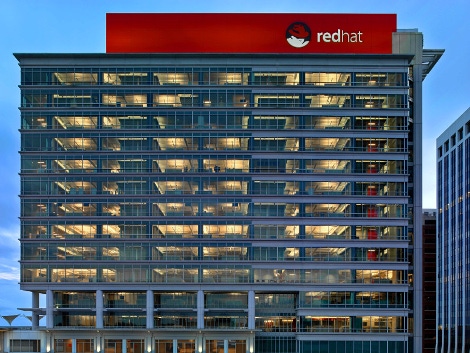Red Hat Keeps Eye on Hybrid Cloud With RHEL 7.5
RHEL's latest helps Red Hat support its cloud aspirations while keeping its feet firmly planted in Linux and open source.
April 11, 2018

On Tuesday Red Hat unleashed the latest and greatest version of its flagship Linux operating system with the release of Red Hat Enterprise Linux 7.5. With most enhancements geared towards meeting cloud environment needs, some have been prompted to note that Red Hat is moving from being "a Linux operating system company to being a cloud company."
While this may be the truth and nothing but the truth, it's not the whole truth. Although Red Hat's focus is on the hybrid cloud, the company will always be rooted in Linux. It's a dollars to donuts bet that Red Hat isn't going to be pushing Windows instead of RHEL onto its customers' on-prem servers in hybrid clouds -- now or ever.
With that out of the way, let's get down to the brass tacks on RHEL 7.5.
Windows Integration
As we've come to expect in this new world order where Linux and Windows aren't locked in mortal combat, RHEL 7.5 offers improvements on the Windows integration front. This includes improved management and communication with Windows Server implementations, more secure data transfers with Microsoft Azure, and performance improvements for complex Microsoft Active Directory architectures.
OpenSCAP and Ansible Integration
The complications of compliance issues aren't being made any easier by multi-cloud environments and portable containers running both on and off premises. RHEL 7.5 attempts to make that road smoother by integrating OpenSCAP, the open source standardized compliance checking solution, with Red Hat Ansible Automation. This allows Ansible Playbooks to be created directly from OpenSCAP scans to more rapidly and consistently impliment fixes throughout a hybrid environment.
In addition, enhancements to Network-Bound Disk Encryption's automatic decryption of data volumes are now supported, meaning data can be better secured across environments.
Containers
In addition to container security enhancements baked-in to the OpenSCAP/Ansible integration, RHEL 7.5 fully supports Buildah, an open source command line tool for building and modifying Open Container Initiative (OCI) compliant container images without a full container runtime or daemon running in the background. This opens the door for IT teams to build and deploy containerized applications quickly and without needing to run a full container engine, reducing the attack surface.
Storage Enhancements
The latest and greatest RHEL also includes virtual data optimizer (VDO), which Red Hat claims can reduce storage costs, both on-prem and in the cloud, by up to 83 percent. VDO, which Red Hat acquired last summer when it brought Massachusetts-based Permabit into its camp, uses de-duplication and compression to reduce data redundancy and improve storage capacity.
Red Hat Enterprise Linux 7.5 is currently available in all supported architectures, including x86, IBM Power, IBM z Systems, and 64-bit Arm. This release also brings support for single-host KVM virtualization and OCI-formated runtime environment and base image to IBM z Systems.
About the Author(s)
You May Also Like



.jpg?width=700&auto=webp&quality=80&disable=upscale)



